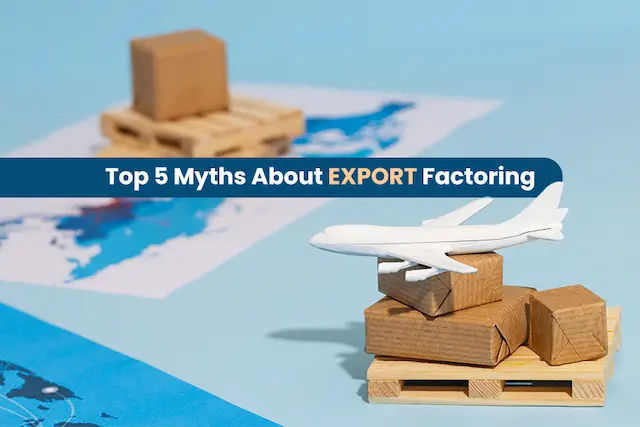Pallets play a critical role in modern shipping, making the process of transporting goods more efficient, secure, and streamlined. These flat structures are used to support and carry goods, allowing for easy stacking and movement. Whether you’re shipping goods by air, sea, or land, pallets are essential to ensuring that products reach their destinations intact and on time.
In this article, we’ll explore the importance of pallets in shipping, how palletizing works, the different types of pallets, and the benefits they provide. We’ll also touch on the difference between palletized and non-palletized shipping, as well as potential hazards involved in palletizing.
What Are Pallets?
Pallets are flat structures, typically made of wood, plastic, or metal, used in shipping to support goods and containers. They allow for easy stacking and secure transportation, ensuring that products stay intact during transit. Pallets are essential for supply chain operations, as they make it easier to handle large quantities of goods using equipment like forklifts and pallet jacks.
The use of pallets greatly reduces the need for manual labor when loading and unloading shipments. This efficiency saves time, minimizes labor costs, and helps avoid injuries that could occur from heavy lifting.
The Concept of Palletizing in Shipping
Palletizing refers to the process of stacking goods onto a pallet in a way that ensures their stability and security during transit. This organized stacking protects products from damage and helps to optimize space in shipping containers. When done correctly, palletizing makes the handling and storage of cargo much more efficient, reducing the risk of product loss or damage during transport.
Items on a pallet are typically arranged according to their weight, with the heaviest items placed at the bottom and lighter ones on top. This helps to create a balanced load, preventing the stack from tipping over or shifting during transit. Additionally, goods are often secured with shrink wrap, straps, or other packing materials to ensure they remain stable during the journey.
Why Are Pallets Essential in Shipping?
Pallets are crucial for several reasons. First, they provide the necessary support and stability for goods, ensuring that they are transported efficiently and securely. Pallets make it easy to move large quantities of products at once, which is especially important when dealing with heavy or bulky items.
Second, pallets play a key role in protecting workers. By allowing handling equipment to do the heavy lifting, pallets help to prevent workplace injuries that could result from manually lifting or moving large objects.
Finally, pallets adhere to various regulations governing their size and sanitation. This is particularly important when shipping internationally, as different countries may have specific rules in place regarding the types of pallets that can be used.
How to Properly Palletize Cargo?
Proper palletization is key to ensuring the safe transportation of goods. The following steps outline the correct way to palletize cargo:
1. Choose the Right Pallet Size
The pallet should be the correct size to accommodate the shipment. A well-sized pallet will help evenly distribute the weight of the goods, making it easier to load and unload them.
2. Ensure the Pallet is Sturdy
The pallet should be strong enough to support the weight of the cargo. A damaged or weak pallet can compromise the stability of the goods and lead to potential accidents.
3. Secure the Goods
Use high-quality packing materials, such as durable shrink wrap or corrugated cardboard, to fill any gaps and hold the items securely in place.
4. Label the Shipment
Proper labeling ensures that the shipment is easy to identify and reduces the likelihood of errors or misplaced cargo during transit.
Floor Loading vs. Palletizing
When shipping goods, there are two main methods: floor loading and palletizing.
Floor Loading
This method involves placing goods directly onto the floor of a shipping container without the use of pallets. While this can save space, it often leads to longer loading and unloading times and increases the risk of damage during transport.
Palletizing
In contrast, palletizing involves stacking goods on pallets. This method offers greater protection for the items and allows for faster, more efficient loading and unloading. Palletized goods are also easier to handle and less likely to sustain damage during transit.
What Is Non-Palletized Cargo?
Non-palletized cargo refers to shipments that cannot be placed on a standard pallet due to their size or shape. Examples of non-palletized items include large machinery, carpentry pieces, and other irregularly shaped goods. These items either exceed the dimensions of standard pallets or are transported without additional packaging. Special care must be taken to ensure that non-palletized cargo is securely fastened and protected during shipping to avoid damage or loss.
Understanding Palletization Charges
When goods are palletized, carriers may charge a fee if the shipper does not provide their own pallets. This is known as a palletization charge, and it covers the cost of the carrier supplying their own pallets. These charges can vary depending on the carrier and the type of pallet used, ranging from $35 to $75 per pallet.
The charge also includes the cost of certified pallets that comply with international standards, such as the International Standards for Phytosanitary Measures (ISPM 15). This ensures that the pallets are safe for shipping, particularly when crossing international borders.
The Difference Between a Package and a Pallet
A package refers to an individual parcel, typically shipped in a cardboard box, whereas a pallet refers to a large unit load made up of multiple packages or goods stacked together. While packages are suitable for small shipments, pallets are more cost-effective for transporting large quantities of items in one go.
Palletized goods are also less likely to become separated or lost during transit, making them a more secure option for bulk shipping.
Loose Cargo vs. Palletized Cargo
Loose Cargo
This refers to items that are not placed in containers or on pallets. These goods are loaded directly onto vehicles and transported using specialized trailers. While this method may be necessary for unusually large or oddly shaped items, it can be more difficult to handle and transport.
Palletized Cargo
In contrast, palletized cargo involves stacking goods onto pallets for shipping. This method offers several advantages, including improved handling, faster loading and unloading, and better protection for the goods.
Effective Palletizing Techniques
To palletize a shipment effectively and reduce the risk of damage, follow these techniques:
– Wrap the Cargo Securely: Use multiple layers of shrink wrap to hold the items together and enhance their stability.
– Distribute the Weight Evenly: Place the heaviest items at the bottom of the pallet to prevent the stack from becoming top-heavy and tipping over during transit.
– Use Cushioning Materials: Ensure that all items are properly packaged and padded to protect them from vibrations and shocks during shipping.
– Reinforce the Load: Consider using cardboard or other protective materials to create a barrier around the cargo, further protecting it from damage.
Types of Pallets
Pallets come in various types, each suited to different shipping needs:
Block Pallets
These pallets can be accessed by forklifts from all four sides, making them easy to handle. They are typically made from wood, plastic, or plywood.
Stringer Pallets
These pallets have stringers—boards that run between the top and bottom decks—to provide support. Stringer pallets can be either two-way or four-way, depending on how they are accessed by handling equipment.
Double-Face Pallets
These pallets have decks on both the top and bottom surfaces, providing additional strength and ensuring the even distribution of weight.
Benefits of Palletizing
Palletizing offers several key benefits:
- Increased Efficiency: Palletized goods can be moved quickly and easily, reducing the time spent loading and unloading shipments.
- Reduced Damage: Pallets protect goods from damage by ensuring they are properly supported and secured during transit.
- Improved Tracking: Palletized shipments are easier to label and track, reducing the risk of errors or lost items.
- Extended Shelf Life for Perishables: Pallets allow for proper drainage and ventilation, which helps to preserve perishable goods during shipping.
Potential Hazards of Palletizing
While palletizing offers many advantages, it’s important to handle pallets with care to avoid potential hazards:
- Injuries from Improper Handling: Workers can be injured if pallets are not handled correctly, particularly if they are overloaded or unevenly stacked.
- Manual Palletizing Risks: Manual palletizing increases the likelihood of errors and injuries. Automating the process can help reduce these risks.
- Debris Hazards: Pallets can produce debris, such as splinters, which can cause injuries. Regularly inspecting and maintaining pallets is essential to prevent accidents.
Also Read: What is Cargo Insurance? Cargo Insurance Meaning, Types and Benefits
Conclusion
Pallets and palletizing are indispensable in the shipping industry. By providing support, stability, and security, pallets make it easier to transport goods efficiently and safely. Whether you’re shipping loose cargo or palletized freight, understanding the proper methods for palletizing can significantly improve the handling, protection, and tracking of your shipments.





